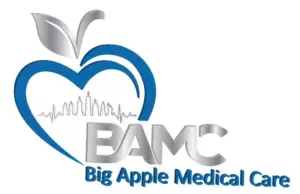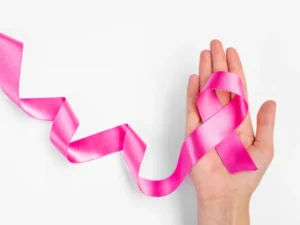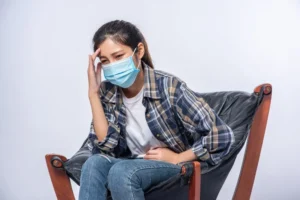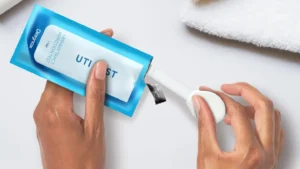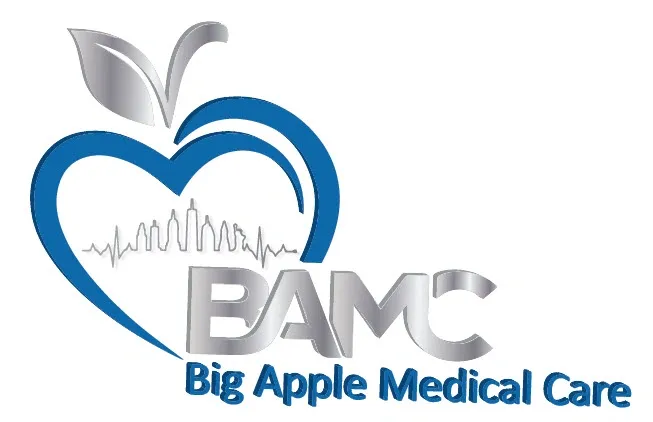Monkeypox Guide: Symptoms, Prevention, and Treatment in Brooklyn
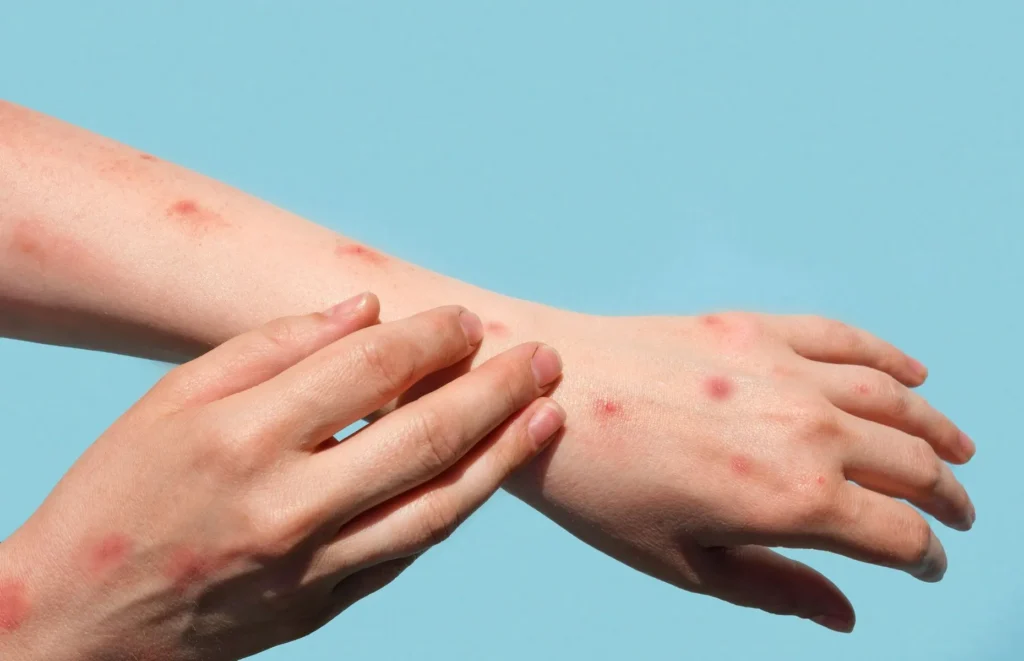
Monkeypox infections have emerged as a public health concern, requiring attention and awareness from communities worldwide. The virus spreads through close physical contact with infected individuals or contaminated materials, causing symptoms like fever, rash, and swollen lymph nodes that typically last 2-4 weeks.
Early detection plays a crucial role in preventing the spread of monkeypox. Recognizing the signs and taking appropriate preventive measures can help protect individuals and their loved ones from infection.
At Big Apple Medical Care in New York City, healthcare professionals provide comprehensive testing and treatment services for patients concerned about monkeypox exposure. Their medical team stays current with CDC guidelines and offers personalized care plans for those affected by the virus.
Understanding Monkeypox
Monkeypox virus causes a rare but serious infectious disease that emerged from Central and West African rainforests. The virus belongs to the Orthopoxvirus genus, which includes the variola virus that causes smallpox.
History and Overview
Monkeypox was first discovered in 1958 when two outbreaks occurred in research monkeys. The first human case was recorded in 1970 in the Democratic Republic of the Congo during intensified smallpox eradication efforts.
The virus exists in two distinct genetic strains: the Central African strain and the West African strain. The West African strain typically causes milder illness.
Endemic countries include the Democratic Republic of the Congo, Nigeria, Cameroon, and several other Central and West African nations. Sporadic outbreaks have occurred globally through international travel and animal importation.
Mode of Transmission
The virus spreads through close physical contact with infected individuals, particularly through skin lesions, bodily fluids, or respiratory droplets. Direct contact with contaminated materials like bedding can also transmit the virus.
Animal-to-human transmission occurs through bites, scratches, or consuming inadequately cooked meat from infected animals. Common animal hosts include rodents and primates.
The virus can enter the body through broken skin, respiratory tract, or mucous membranes.
Risk Factors
Healthcare workers face elevated risk due to potential exposure while treating infected patients. Proper personal protective equipment is essential for prevention.
People who live in or travel to endemic regions have increased exposure risk. Contact with wildlife or exotic pets, particularly rodents from affected areas, raises transmission chances.
Individuals with weakened immune systems may experience more severe symptoms if infected. Recent data shows that close intimate contact during outbreaks can increase transmission risk.
Identifying Symptoms
Monkeypox presents distinctive physical signs that typically appear in stages, with symptoms ranging from mild to severe. Early detection helps prevent transmission and enables prompt medical intervention.
Common Signs
The first signs often include fever, intense headache, muscle aches, and fatigue. Swollen lymph nodes appear in many cases – a key difference from similar diseases.
A characteristic rash emerges 1-3 days after fever begins. The rash progresses through several stages:
- Red spots (macules)
- Raised bumps (papules)
- Fluid-filled blisters (vesicles)
- Pus-filled lesions (pustules)
- Scabs that eventually fall off
The rash commonly starts on the face and spreads to other body parts. Lesions can appear on palms, soles, genitals, and inside the mouth.
Incubation Period
The time between exposure and first symptoms ranges from 5-21 days. Most people develop initial signs within 7-14 days after contact with the virus.
During the incubation period, infected individuals cannot spread the virus to others. Transmission risk begins once symptoms appear, particularly when the rash develops.
Comparisons to Other Illnesses
Monkeypox symptoms may resemble chickenpox, measles, or certain sexually transmitted infections. Key differences include:
Chickenpox:
- Rash appears in waves
- Lesions develop more rapidly
- Less severe lymph node swelling
Measles:
- Rash spreads differently
- More severe respiratory symptoms
- Characteristic Koplik spots inside cheeks
Medical evaluation is essential for proper diagnosis. Big Apple Medical Care provides testing and diagnosis services for suspected monkeypox cases in their New York facilities.
Preventative Measures
Protecting against monkeypox requires a multi-layered approach combining vaccination, proper hygiene practices, and mindful behavioral choices to minimize exposure risks.
Vaccination Information
The JYNNEOS vaccine provides protection against monkeypox through a two-dose series administered 28 days apart. The vaccine is recommended for high-risk individuals and those who have had recent exposure to someone with monkeypox.
Protection begins developing within days after the first dose, with maximum immunity achieved 14 days after the second dose.
The vaccine is available at designated healthcare facilities, including specialized clinics like Big Apple Medical Care in New York City.
Hygiene Practices
Regular handwashing with soap and warm water for at least 20 seconds helps prevent virus transmission. Use alcohol-based hand sanitizers when soap isn’t available.
Clean and disinfect frequently touched surfaces daily with EPA-registered disinfectants.
Do not share personal items like towels, bedding, or clothing with others, especially those who show symptoms or have been exposed.
Wash clothing, bedding, and towels in hot water and dry them at high temperatures.
Reducing Exposure Risk
Avoid skin-to-skin contact with people who have a rash that looks like monkeypox. Keep physical distance from individuals who have confirmed cases or symptoms.
Limit intimate contact with new or multiple partners during outbreaks.
Avoid contact with materials like bedding that have been used by someone with monkeypox.
Stay informed about local monkeypox cases and follow public health guidelines in your area.
Wear protective equipment like gloves when caring for someone with monkeypox.
Treatment Options
Several proven treatment approaches exist for monkeypox, ranging from medical interventions to supportive home care measures.
Medical Interventions
Antiviral medications like tecovirimat (TPOXX) target the virus directly and can reduce symptom severity. Doctors may prescribe these medications for patients with severe symptoms or those at high risk of complications.
Vaccination within 4 days of exposure can prevent infection or reduce severity. The JYNNEOS vaccine is FDA-approved for monkeypox prevention.
Some patients may receive immunoglobulin therapy, particularly those with weakened immune systems.
Home Care Strategies
Keep rashes clean and dry using mild soap and water. Apply calamine lotion to reduce itching and discomfort.
Take over-the-counter pain relievers like acetaminophen or ibuprofen to manage fever and body aches.
Stay hydrated by drinking plenty of water and clear fluids. Rest frequently to support the body’s healing process.
Use clean, soft bandages to cover rashes and prevent spreading the virus to others.
When to Seek Medical Help
Seek immediate medical attention for fever above 102°F (38.9°C) or severe pain that interferes with daily activities.
Contact healthcare providers if rashes become infected, showing signs of pus, redness, or warmth.
Emergency care is necessary for difficulty breathing, chest pain, or severe confusion.
Medical evaluation is crucial for individuals with weakened immune systems or those who develop symptoms after exposure to an infected person.
Frequently Asked Questions
Monkeypox infection presents distinct signs, spreads through specific contact methods, and requires targeted prevention strategies and treatments. Medical experts have identified key populations at higher risk and developed effective protocols for patient care.
What are the initial symptoms to look out for in monkeypox?
The first signs typically appear 7-14 days after exposure and include fever, headache, muscle aches, and exhaustion.
A distinctive rash emerges within 1-3 days after the fever, often starting on the face before spreading to other body parts.
The rash progresses through several stages, from flat spots to raised bumps, then fluid-filled blisters that eventually scab over.
How can one prevent the spread of monkeypox?
Avoid close contact with infected individuals or their personal items, including bedding and clothing.
Practice good hand hygiene by washing frequently with soap and water or using alcohol-based sanitizers.
Wear personal protective equipment when caring for someone with suspected or confirmed monkeypox.
Can monkeypox affect children differently than adults?
Children may experience more severe symptoms due to their developing immune systems.
The rash pattern in children can be more widespread across the body compared to adults.
Children under 8 years old face higher risks of complications and may require closer medical monitoring.
What treatments are available for those infected with monkeypox?
Antiviral medications like TPOXX can be prescribed for severe cases or high-risk patients.
Supportive care includes fever management, pain relief, and keeping rash areas clean and dry.
Most cases resolve without specific treatment within 2-4 weeks with proper rest and symptom management.
How is monkeypox transmitted among people?
Direct skin-to-skin contact with the rash or body fluids of an infected person is the primary transmission route.
Respiratory droplets during prolonged face-to-face contact can spread the virus.
Contact with contaminated objects like clothing, bedding, or towels used by an infected person can transmit the virus.
Who is considered at high risk for contracting monkeypox?
Healthcare workers who treat infected patients face increased exposure risk.
People who have multiple intimate partners or close physical contact with others in areas with known cases.
Laboratory workers who handle monkeypox specimens need special precautions and protective measures.
